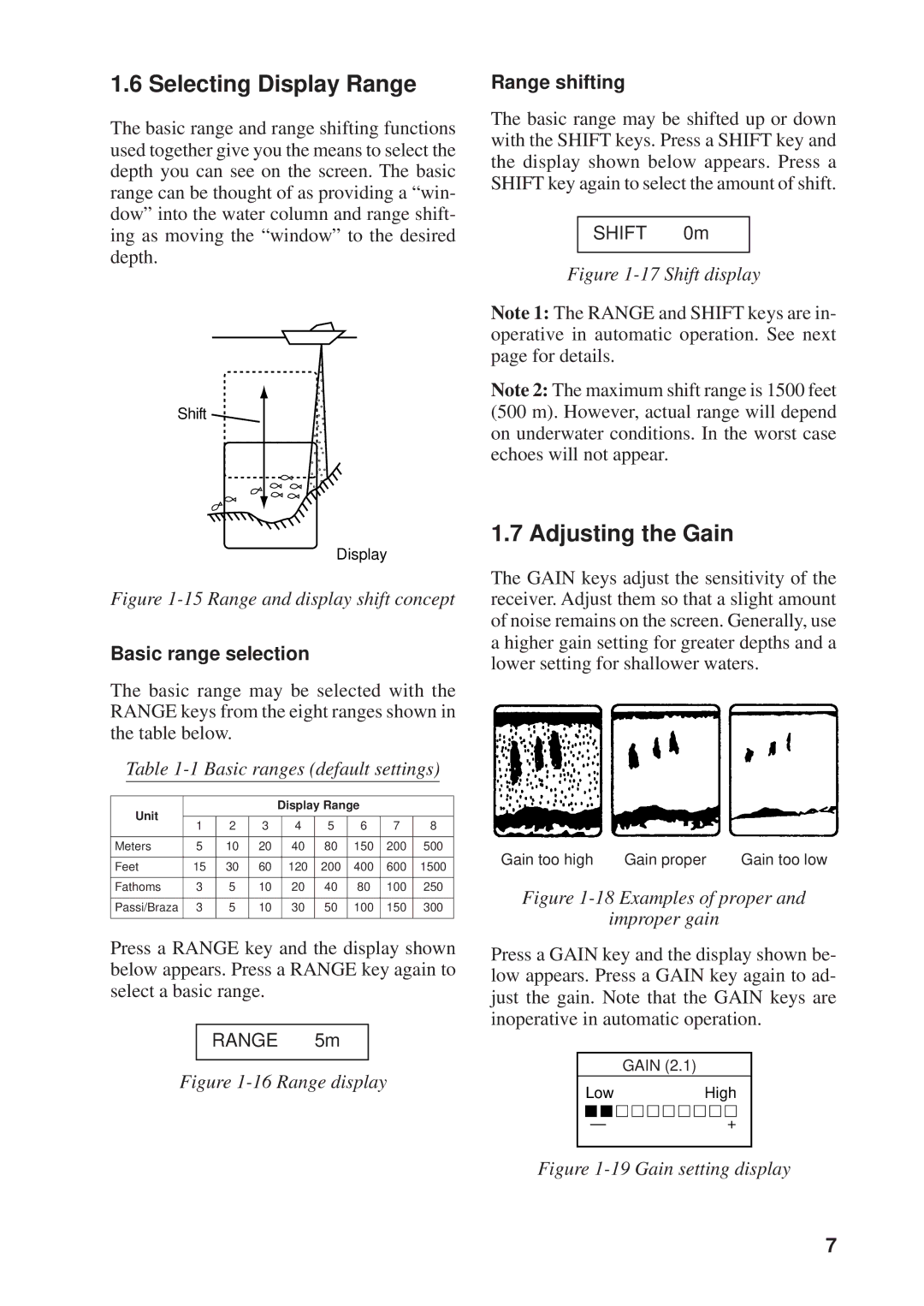
1.6 Selecting Display Range
The basic range and range shifting functions used together give you the means to select the depth you can see on the screen. The basic range can be thought of as providing a “win- dow” into the water column and range shift- ing as moving the “window” to the desired depth.
Shift ![]()
Range shifting
The basic range may be shifted up or down with the SHIFT keys. Press a SHIFT key and the display shown below appears. Press a SHIFT key again to select the amount of shift.
SHIFT 0m
Figure 1-17 Shift display
Note 1: The RANGE and SHIFT keys are in- operative in automatic operation. See next page for details.
Note 2: The maximum shift range is 1500 feet (500 m). However, actual range will depend on underwater conditions. In the worst case echoes will not appear.
Display
Figure 1-15 Range and display shift concept
Basic range selection
The basic range may be selected with the RANGE keys from the eight ranges shown in the table below.
Table 1-1 Basic ranges (default settings)
Unit |
|
|
| Display Range |
|
| |||
|
|
|
|
|
|
|
|
| |
1 | 2 | 3 |
| 4 | 5 | 6 | 7 | 8 | |
|
| ||||||||
|
|
|
|
|
|
|
|
|
|
Meters | 5 | 10 | 20 |
| 40 | 80 | 150 | 200 | 500 |
|
|
|
|
|
|
|
|
|
|
Feet | 15 | 30 | 60 |
| 120 | 200 | 400 | 600 | 1500 |
|
|
|
|
|
|
|
|
|
|
Fathoms | 3 | 5 | 10 |
| 20 | 40 | 80 | 100 | 250 |
|
|
|
|
|
|
|
|
|
|
Passi/Braza | 3 | 5 | 10 |
| 30 | 50 | 100 | 150 | 300 |
|
|
|
|
|
|
|
|
|
|
Press a RANGE key and the display shown below appears. Press a RANGE key again to select a basic range.
RANGE 5m
Figure 1-16 Range display
1.7 Adjusting the Gain
The GAIN keys adjust the sensitivity of the receiver. Adjust them so that a slight amount of noise remains on the screen. Generally, use a higher gain setting for greater depths and a lower setting for shallower waters.
Gain too high | Gain proper | Gain too low |
Figure 1-18 Examples of proper and
improper gain
Press a GAIN key and the display shown be- low appears. Press a GAIN key again to ad- just the gain. Note that the GAIN keys are inoperative in automatic operation.
GAIN (2.1)
LowHigh
—+
Figure 1-19 Gain setting display
7
